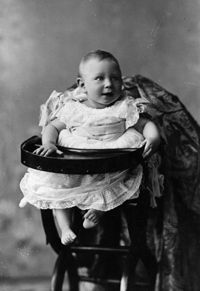Surely you've done it before. You see a small baby and, based on the color of the baby's blanket, decide whether it's a boy or a girl. It's common knowledge that pink is for girls and blue is for boys. But have you ever wondered why? Why is it that boys prefer blue and girls pink? Is it a cultural phenomenon, as many assume? Or does this distinction between color preferences occur on a different level?
This question is exactly what two neuroscientists working at Newcastle University in Great Britain seek to answer. Doctors Anya Hurlbert and Yazhu Ling created an experiment concerning color preferences among men and women. The journal Current Biology published their findings in the Aug. 21, 2007, issue.
Advertisement
The researchers assembled 206 test subjects of both sexes between the ages of 20 and 26 for the study. Most were British Caucasians, but 37 were of Chinese ancestry and were raised in China. The subjects sat before a computer while two rectangles of different colors flashed on the screen. For the purpose of the study, the neuroscientists divided the color spectrum into two halves, red-green and blue-yellow. The rectangles were sorted into these two categories.
The researchers asked participants to quickly choose which rectangle they preferred, and then the computer moved on to another set of rectangles. The findings from the experiment showed that men and women both preferred blue out of this set of basic colors.
When given mixed colors to choose from, the male population of the study showed a wide preference for color blends. But when the women were asked to choose from mixed colors, they tended to prefer colors that moved away from blue and toward the red end of the spectrum, where shades like pinks and lilacs are found. The scientists concluded that the long-held distinction of color preferences among genders had a real basis.
But why? Couldn't these results be due to the participants being raised in a culture where blue is for boys and pink for girls? In other words, couldn't the color preferences be learned rather than innate -- something we're born with?
That's where the Chinese participants came in. To show the pink/blue color preference exists across cultures and is therefore not a cultural construct, the researchers gave the same test to Chinese subjects. The results were similar among the Chinese women and the British women: Both preferred the shades found on the red side of the spectrum.
This lends support to the notion that color preferences among the sexes have a biological basis rather than a cultural one. The researchers hope to support this conclusion with a revised version of the test modified for infants. A very young child, the scientists reason, hasn't yet had a chance to be socialized into a gender role by society. Therefore, any color preferences displayed by babies would have to be innate.
But the question remains -- why is there a distinction among males and females regarding color preferences? Doctors Hurlbert and Ling suggest that the reason is found in humanity's distant past. Read the next page to find out how the origins of our color preferences might be found on the African savannah.
Advertisement



